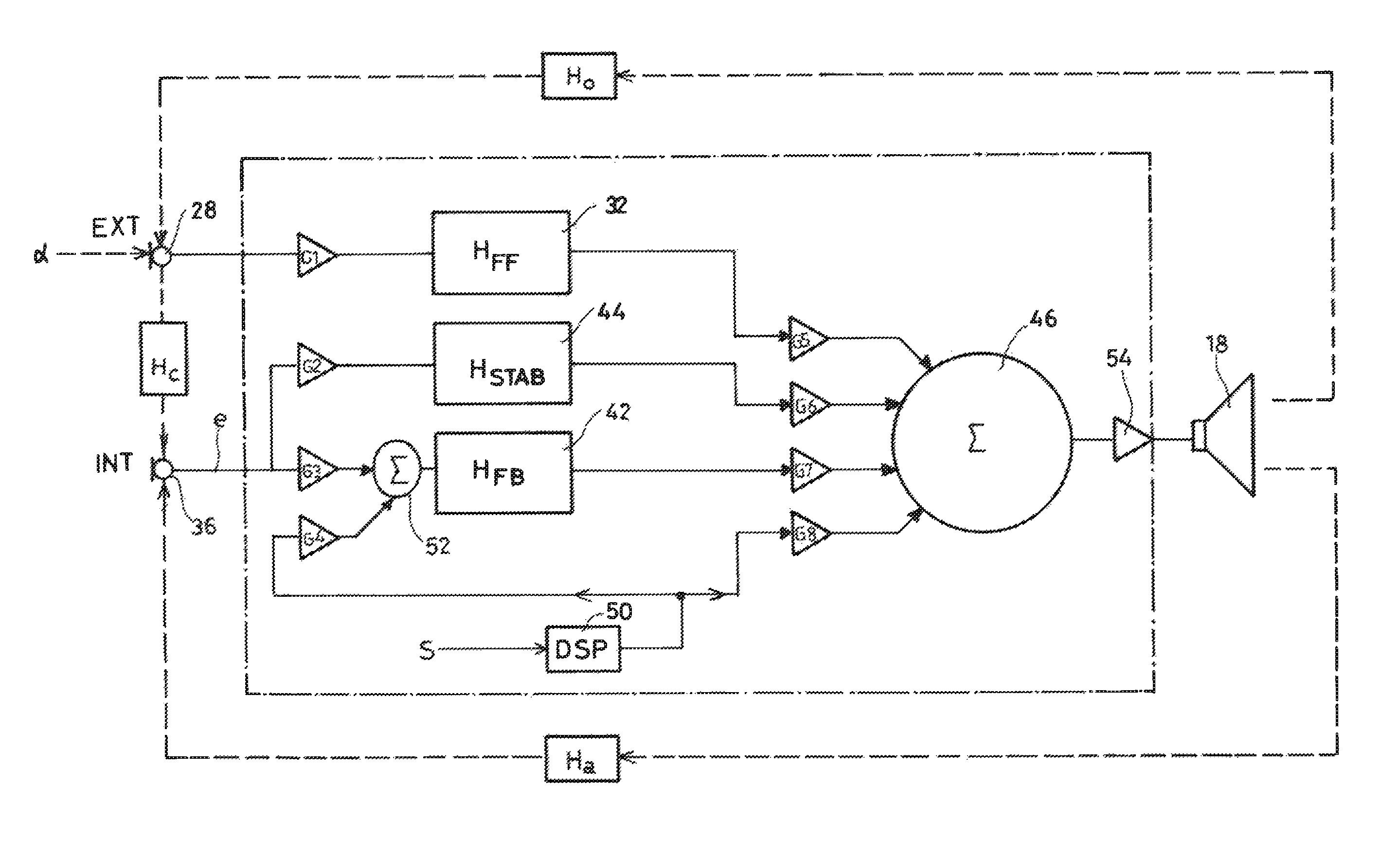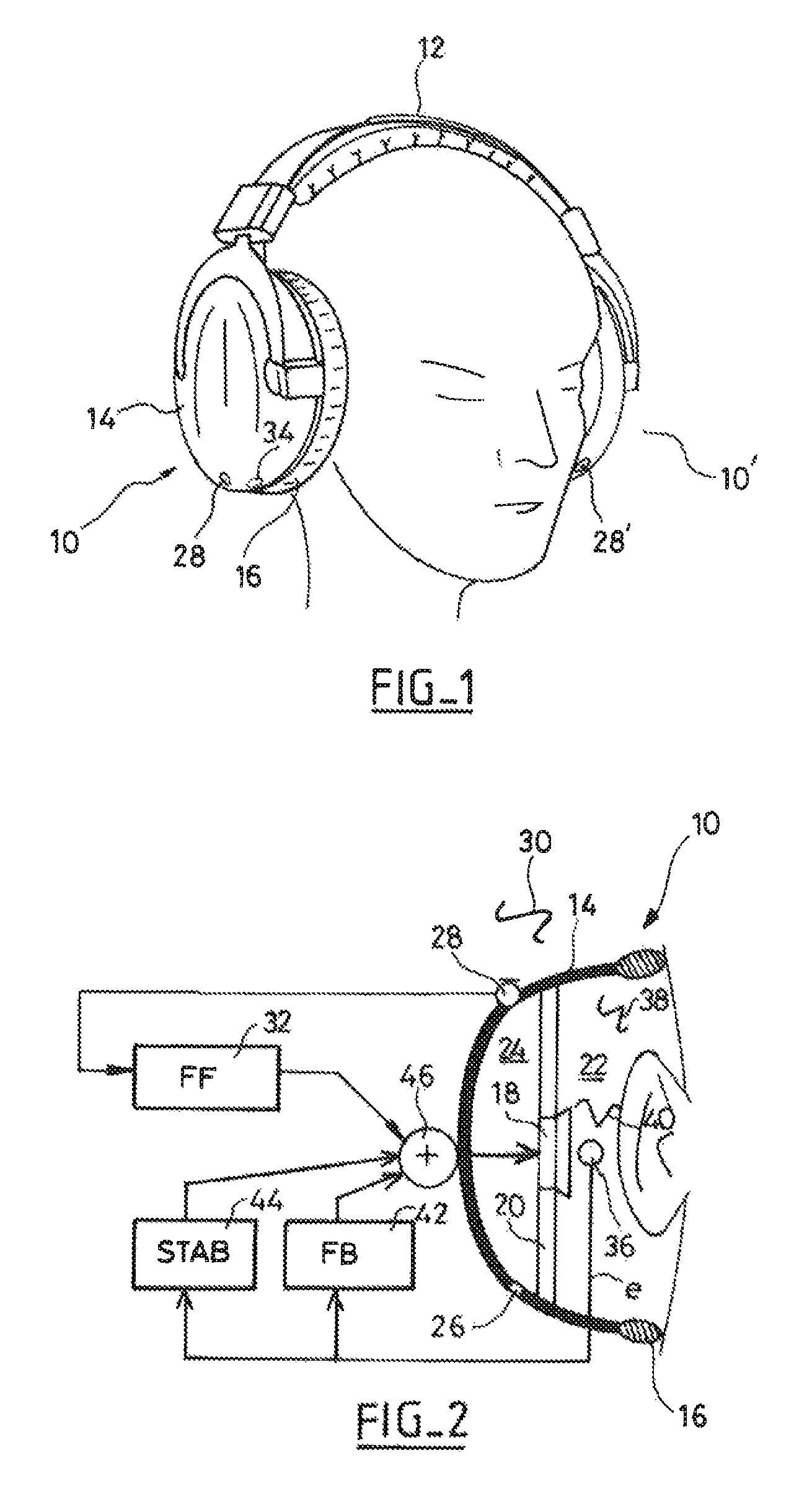Audio headset with active noise control of the non-adaptive type for listening to an audio music source and/or for “hands-free” telephony functions
a technology of active noise control and audio music, which is applied in the direction of stereophonic communication headphones, sound producing devices, transmission, etc., can solve the problems of affecting the reactivity of the system, requiring relatively large amounts of computation power, and being prone to damage, so as to reduce the risk of instability, reduce the risk of loss, and improve the effect of gain and phase margin
- Summary
- Abstract
- Description
- Claims
- Application Information
AI Technical Summary
Benefits of technology
Problems solved by technology
Method used
Image
Examples
Embodiment Construction
[0060]FIG. 1 shows an audio headset on the head of a user. In conventional manner, the headset comprises two earpieces 10 and 10′ connected together by a headband 12. Each of the earpieces 10 comprises an outer shell 14 that presses around the outline of the user's ear with a flexible ear-surrounding cushion 16 interposed between the shell 14 and the periphery of the ear in order to ensure satisfactory sealing, from an acoustic point of view, between the vicinity of the ear and the external sound environment.
[0061]FIG. 2 is a diagram showing the various acoustic and electrical signals and the various functional blocks involved in the operation of an audio headset with active noise control.
[0062]The earpiece 10 encloses a sound play back transducer 18, referred to below simply as the “transducer”, which is carried on a partition 20 defining two cavities, namely a front cavity 22 beside the ear and a rear cavity 24 on the opposite side.
[0063]The front cavity 22 is defined by the inter...
PUM
 Login to View More
Login to View More Abstract
Description
Claims
Application Information
 Login to View More
Login to View More - R&D
- Intellectual Property
- Life Sciences
- Materials
- Tech Scout
- Unparalleled Data Quality
- Higher Quality Content
- 60% Fewer Hallucinations
Browse by: Latest US Patents, China's latest patents, Technical Efficacy Thesaurus, Application Domain, Technology Topic, Popular Technical Reports.
© 2025 PatSnap. All rights reserved.Legal|Privacy policy|Modern Slavery Act Transparency Statement|Sitemap|About US| Contact US: help@patsnap.com



